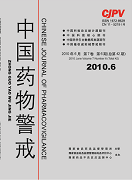|
|
Analysis of Clinical Pharmacists Carry Out Treatment Program Optimization Job
WANG Wei-lan, ZHU Man, PEI Fei, WANG Bo, WANG Dong-xiao, HUANG Cui-li
2010, 7(6):
340-342.
Objective To promote clinical rational use of drug, clinical pharmacists found the doctor's orders can or must be optimized by reviewing doctor's advice and discussed with doctor to reduce the risk of clinical medicine and optimize treatment program. Methods Reference to the flowchart of inpatients doctor's advice, Clinical pharmacists reviewed advice of ward(respiratory, cardiology, endocrinology, oncology) to give medication recommendations and to fill in the the registration form by which clinical pharmacists analyzed. Results Clinical Pharmacists proposed to optimize185 the doctor's advice, 108 was adopted by doctors and 31 would be concern about by doctors, 46 did not be adopted. The adoption rate was 58.38%.Contents of the proposals were mainly drug delivery Methods, drug selection, ADR-related issues, drug interactions, treatment, repeat medication, indications, etc. Optimization program involving drugs were mainly circulatory drugs, anti-microbial drugs, respiratory drugs and hormone and related drugs. Conclusion Clinical pharmacist has played a certain role in improving the level of clinical rational drug use, reducing risk and optimizing the delivery of clinical medicine program by doctor's orders review, which helped share experiences and mutual learning among the clinical pharmacists.
References |
Related Articles |
Metrics
|
